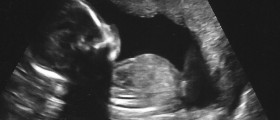
First, it is important to note that the vast majority of early pregnancy losses does not require a D&C. If you had a miscarriage in the first trimester of pregnancy, the chances are that your body will complete the process of miscarrying on its own without the need for medical assistance. It is possible to opt for a D&C to get the process "over and done with" sooner for those who want that. What actually happens during a D&C procedure?
Typically, women will be given antibiotics to avoid infections. If your cervix has not already dilated, medical instruments will be used to help the cervix open, and a speculum will be inserted to help the cervix remain dilated. Then, a plastic tube that is flexible is used to remove the contents of the uterus with suction. This is called a plastic cannula and its size will depend on the number of weeks you were into your pregnancy. After the D&C, you can expect some bleeding and cramping. You may need to rest for a few days while you recover, just like with a miscarriage that completed naturally.
While you recover, it is important to make sure to avoid placing anything in the vagina. Tampons are not an option for dealing with post-D&C bleeding, for instance, as they could cause an infection. If you experience severe pain, fever, ongoing cramping, or bleeding that lasts for two weeks, you should contact your doctor. If you feel dizzy or you fainted, medical assistance is also needed. Also see: Why is a D&C carried out?
- www.nhs.uk/conditions/miscarriage/what-happens/
- www.nhs.uk/conditions/hysteroscopy/
- Photo courtesy of SnowBlink by Wikimedia Commons: commons.wikimedia.org/wiki/File:D%26C_Sets_02.jpg
















Your thoughts on this
Loading...